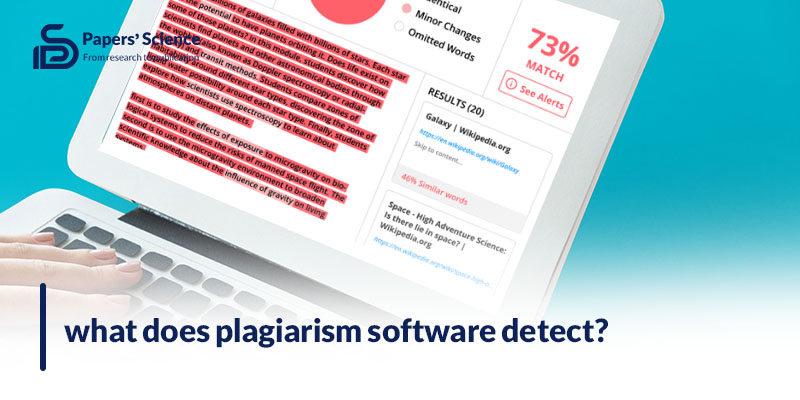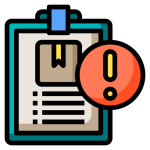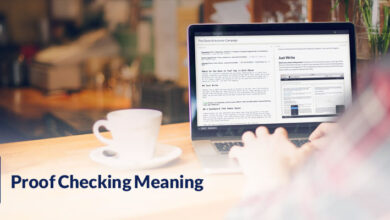What does plagiarism software detect

Many articles are published daily in blogs and academic journals, making creating unique, plagiarism-free content challenging.
On the other hand, copied content is not welcomed by anyone, and everyone seeks a way to generate unique content that cannot be found elsewhere.
Checking content and detecting plagiarism without relying on software is nearly impossible. Therefore, your only option is to use software specifically designed to detect plagiarism.
But how do these software programs work, and what does plagiarism software detect? To find the answers to these questions, continue reading the rest of the article.
What is plagiarism?
Plagiarism is stealing someone’s idea, thought, work, or claim. Plagiarism can happen intentionally and unintentionally, and you see the copy text in your content.
This happens today a lot since the internet is saturated with content, so your content is more likely to contain a copy.
Before being accused of plagiarizing, it is better to use a plagiarism checker to ensure your content is free of plagiarism content.
There are different types of plagiarism that we outline in the rest of the article:
What are the types of plagiarism?
Knowing which type or style of writing is detected as plagiarizing is better before moving on to what plagiarism software detects.
There are about 8 types of plagiarism, including:
- Global plagiarism
When the whole content is copied from someone else, work without making some changes in the content except changing the author’s name and making it your own. - Direct plagiarism
When you copy part of the content from someone else work and put it in your content, it is known as direct plagiarism. - Paraphrasing
You cannot consider paraphrasing as plagiarism since you use synonym words instead. But when you use someone else words differently, it is common plagiarism.
Even if you translate a text from English to Persian example, writing an article counts as paraphrasing.
- Self or auto plagiarism
It is considered self or auto-plagiarism even if you refer to your previous works and use some part in your new article. So, it does not matter who the author is; it is important to refrain from using any part of published articles. - Mosaic plagiarism
As is obvious from its name, relying on different texts and creating a single article by incorporating text from them is considered plagiarism. - Inaccurate authorship
When an article is supposed to be created by a group of authors, the name of an author is not included in the article. At the same time, he is active, or when a person who does not involve in the process of work, neither practically nor in writing, and receives credit on the article, it is called inaccurate authorship, which is a type of plagiarism which you can see more in the academic community. - Source-based plagiarism
In addition to copying the text, using incorrect citations, or creating data and data falsification without working is a kind of plagiarism. - Unintentionally plagiarism
This can happen accidentally due to human errors, but the author will be accused of plagiarism.
After understating the type of plagiarism, now let’s see how plagiarism detector software work in the next section.
How does the plagiarism detector tool work?

To check your content in terms of plagiarism, the only thing you do is copy and paste your text in the box and press on plagiarism check, which is simple. But lots of tools incorporate together to provide you with this straightforward tool.
Most plagiarism tools are based on search engines such as Google, Bing, and Yahoo, using Web crawling methods to analyze and compare the text with previously generated articles.
But some other plagiarism tools have libraries allowing them to detect plagiarized content.
What does plagiarism software detect?
Plagiarism detector software is based on 4 search patterns and analyzes the content in terms of these 4 patterns, which we will introduce to you in the following part.
- Keyword analysis
Plagiarism detector tools check your content to see if keywords are used in the same part of the article as the previously published article. If yes, it records it as plagiarizing. - Phrase detector
Some phrases used in articles cannot be rewritten and should be the same. These phrases are only detected by the plagiarism detectors once they are few. When they go beyond a certain threshold, the detector recognizes them and gives a red flag. - Structure analyzing
What else does a plagiarism detector do in evaluating the text in terms of structure, tone, style, and wording order which makes two articles alike?
Once it detects such an issue in the article, your content probably gets a red flag.
What percentage of plagiarism is approvable?
There is no solid information to know to what extent of plagiarism you will not undergo problems.
But content with %5 plagiarism is considered low plagiarism, while content with over %20 is labelled with a high plagiarism rate.
Read More: How to label figures in research paper
Let’s recap
As the number of content is published on the net, the technology of plagiarism detectors improves. Although having lots of content references allows you to use lots of resources for making content, on the other hand, it becomes hard to content free plagiarism content.
In this article, we provide information on what plagiarism software detects.
Hope you find this article useful in creating unique content. Let us know in the comment which plagiarism detector software you recommend if you know one well.

What do you think about the use of plagiarism software in academic and professional settings? Leave your comment for us.



